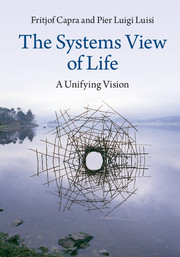Book contents
- Frontmatter
- Dedication
- Contents
- Preface
- Acknowledgments
- Introduction Paradigms in science and society
- I The mechanistic worldview
- 1 The Newtonian world-machine
- 2 The mechanistic view of life
- 3 Mechanistic social thought
- II The rise of systems thinking
- III A new conception of life
- IV Sustaining the web of life
- Bibliography
- Index
1 - The Newtonian world-machine
from I - The mechanistic worldview
Published online by Cambridge University Press: 05 April 2014
- Frontmatter
- Dedication
- Contents
- Preface
- Acknowledgments
- Introduction Paradigms in science and society
- I The mechanistic worldview
- 1 The Newtonian world-machine
- 2 The mechanistic view of life
- 3 Mechanistic social thought
- II The rise of systems thinking
- III A new conception of life
- IV Sustaining the web of life
- Bibliography
- Index
Summary
To appreciate the revolutionary nature of the systems view of life, it is useful to examine in some detail the history, principal characteristics, and widespread influence of the mechanistic paradigm, which it is destined to replace. This is the purpose of our first three chapters, in which we discuss the origin and rise of Cartesian-Newtonian science during the Scientific Revolution (Chapter 1), as well as its impact on both the life sciences (Chapter 2) and the social sciences (Chapter 3).
The worldview and value system that lie at the basis of the modern industrial age were formulated in their essential outlines in the sixteenth and seventeenth centuries. Between 1500 and 1700, there was a dramatic shift in the way people in Europe pictured the world and in their whole way of thinking. The new mentality and new perception of the cosmos gave our Western civilization the features that are characteristic of the modern era. They became the basis of the paradigm that has dominated our culture for the past 300 years and is now changing.
- Type
- Chapter
- Information
- The Systems View of LifeA Unifying Vision, pp. 19 - 34Publisher: Cambridge University PressPrint publication year: 2014
- 3
- Cited by



